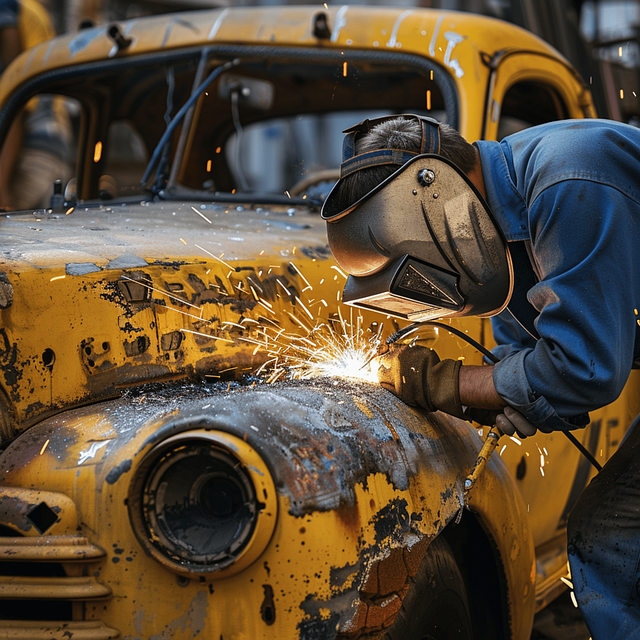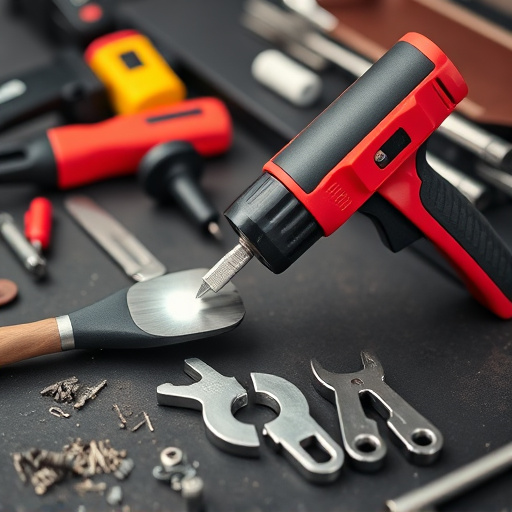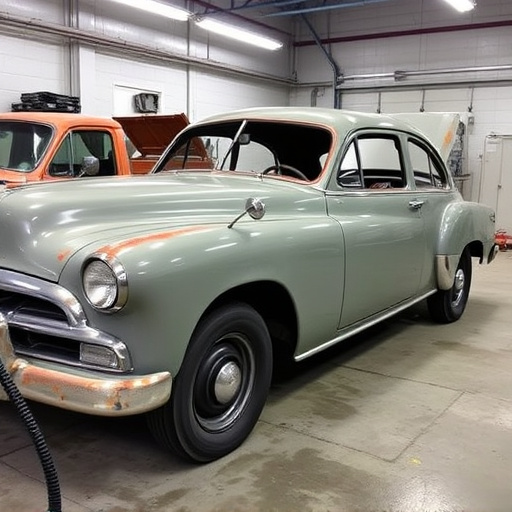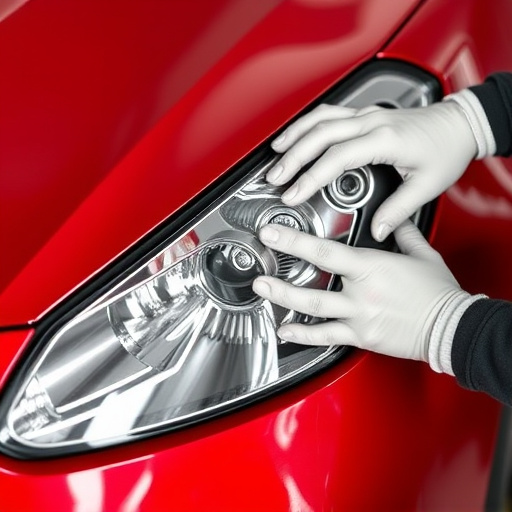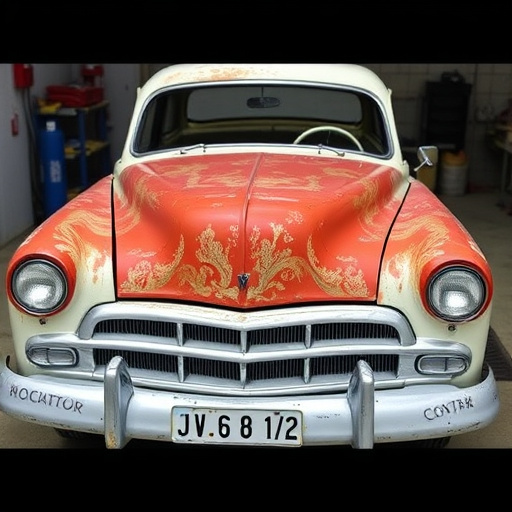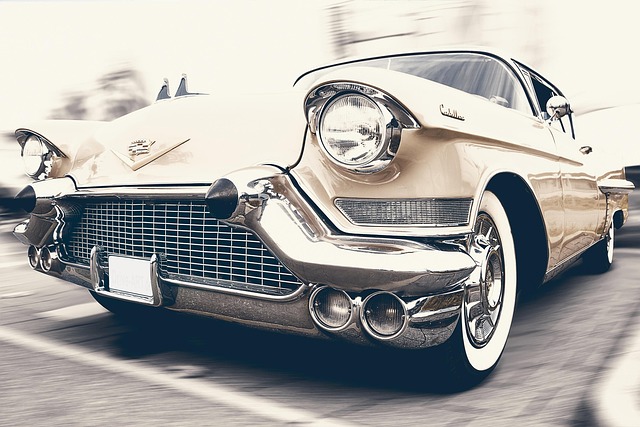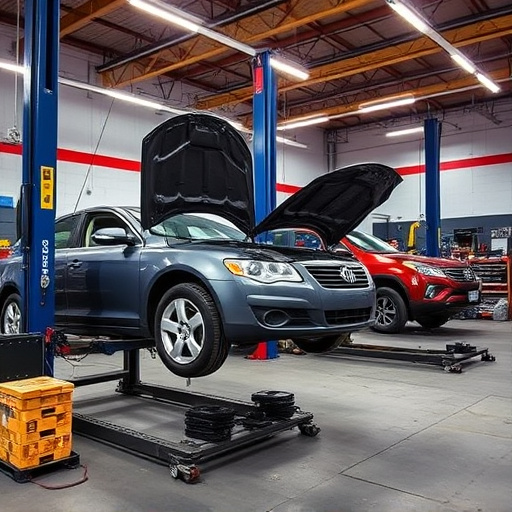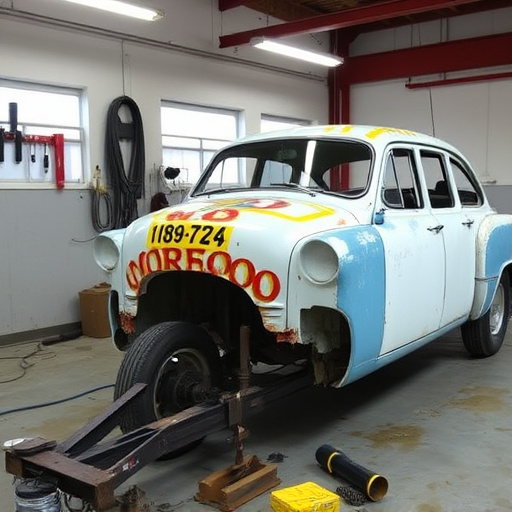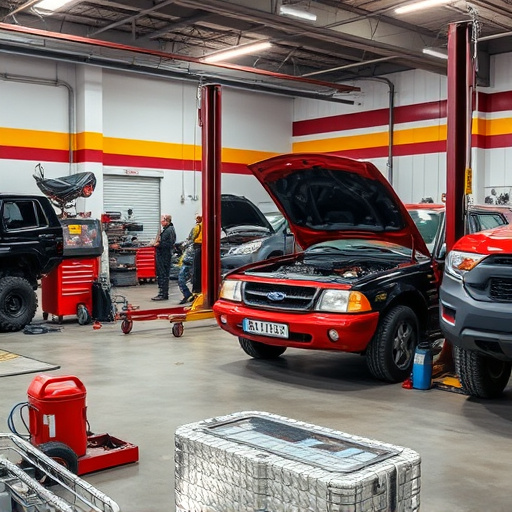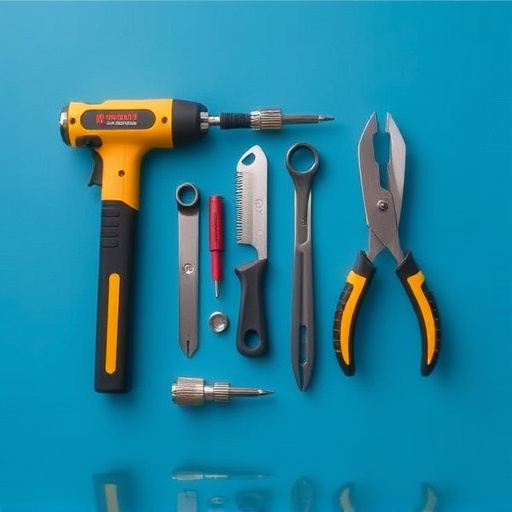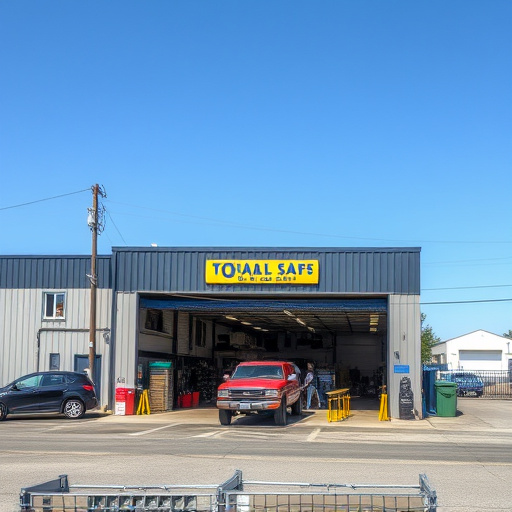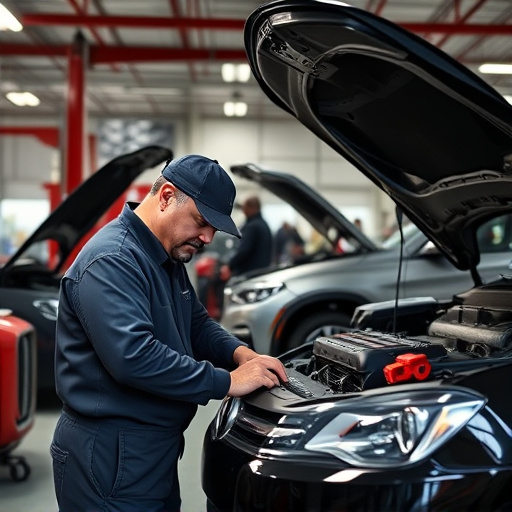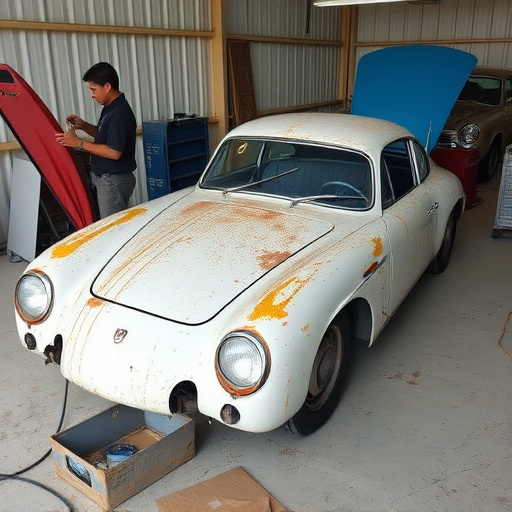Mastering vehicle color matching requires understanding pigment interactions and environmental factors. Leading collision repair centers use advanced technologies like color scanners and spectrophotometers to accurately analyze and replicate unique manufacturer formulations. Skilled technicians match shade, luster, and texture for seamless repairs, ensuring new paint jobs blend flawlessly with existing finishes. Best practices include using advanced measurement tools, standard mixing procedures, and brand-specific protocols for precise vehicle color matching results.
In the precision-driven world of automotive painting, accurate vehicle color matching is paramount. This article delves into the key factors behind achieving flawless results, exploring critical aspects such as understanding complex vehicle color dynamics and embracing advanced technical methods. We also uncover best practices that ensure consistent and precise color replication, vital for satisfying modern consumers’ expectations. By mastering these elements, professionals can deliver top-tier vehicle color matching services.
- Understanding Vehicle Color Dynamics
- Technical Aspects of Color Matching
- Best Practices for Ensuring Precision
Understanding Vehicle Color Dynamics
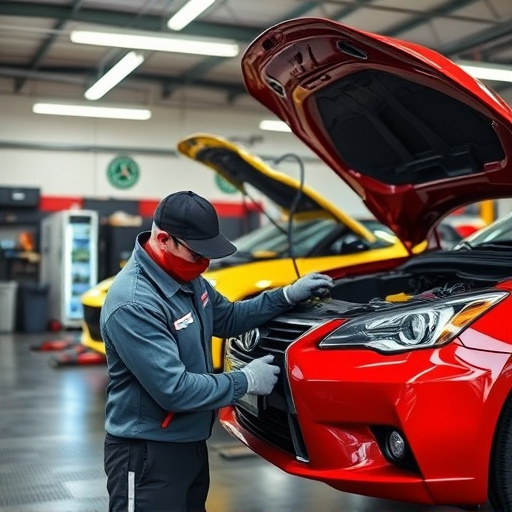
In the realm of vehicle color matching, understanding the dynamics behind color creation and application is paramount. Vehicle colors are not merely aesthetic; they involve a complex interplay of pigments, dyes, and coatings designed to withstand various environmental conditions. Each automotive repair service and collision repair center must comprehend these nuances to achieve precise matches during restoration or repainting jobs.
The process begins with understanding the spectrum of colors and how different pigments interact. This involves knowing the unique formulations used by manufacturers for each vehicle model, as well as the potential variations that can occur over time due to exposure to sunlight, weather conditions, and normal wear and tear. Collision repair shops specializing in vehicle color matching often employ advanced technologies and tools to analyze and replicate these colors accurately, ensuring that repaired or repainted vehicles look as good as new.
Technical Aspects of Color Matching
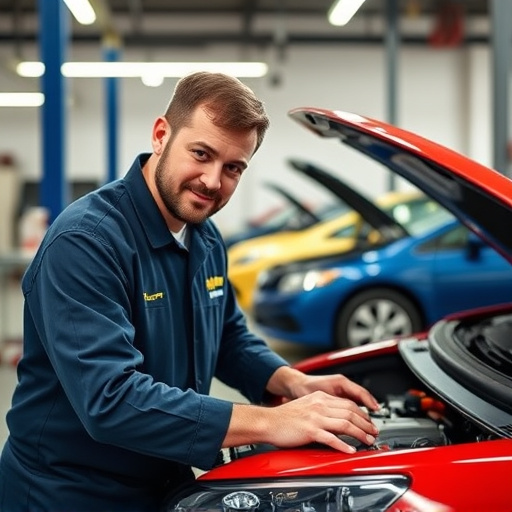
In the realm of vehicle color matching, understanding technical aspects is paramount for achieving precision and quality. The process involves intricate analysis and replication of a vehicle’s original color code. This begins with decoding the unique combination of pigments and dyes used in the manufacturing process, which can vary across different models and years. Advanced equipment like color scanners and spectrophotometers play a crucial role here, accurately measuring and recording the exact hues and tones.
Once the base color is determined, skilled technicians use specialized tools and techniques to match not just the shade but also the luster and texture. This meticulous attention to detail ensures that repairs or restorations, including bumper repair and car restoration, are seamless. Quality car paint services leverage their expertise to blend new paint jobs with existing finishes, making it nearly impossible to distinguish between the original and the restored parts.
Best Practices for Ensuring Precision
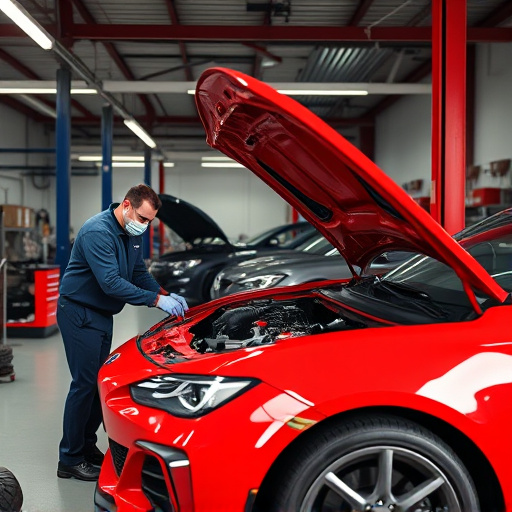
To achieve precise vehicle color matching, it’s essential to adhere to best practices that ensure accuracy and quality. One key practice is using advanced color measurement tools designed for automotive applications. These devices provide exact color readings, allowing technicians to match colors with incredible precision. Regular calibration of these instruments is also vital; keeping them accurately set ensures consistent results across different projects.
Another important aspect is adhering to standardized color mixing procedures. This involves following specific formulas and guidelines when blending pigments to achieve the desired shade. Training and certification in color matching techniques from reputable automotive repair schools or workshops can significantly enhance a technician’s skills, leading to better outcomes. For instance, understanding the nuances of Mercedes-Benz repairs or general collision damage repairs requires not just technical prowess but also an eye for detail and adherence to brand-specific color matching protocols.
Accurate vehicle color matching is a precise art that combines an understanding of automotive dynamics and advanced technical skills. By grasping the intricacies of color science, utilizing the right tools, and adopting best practices, professionals can ensure minimal variation in color outcomes. This meticulous approach not only enhances visual appeal but also guarantees customer satisfaction, solidifying the importance of vehicle color matching as a key aspect of the automotive industry.
